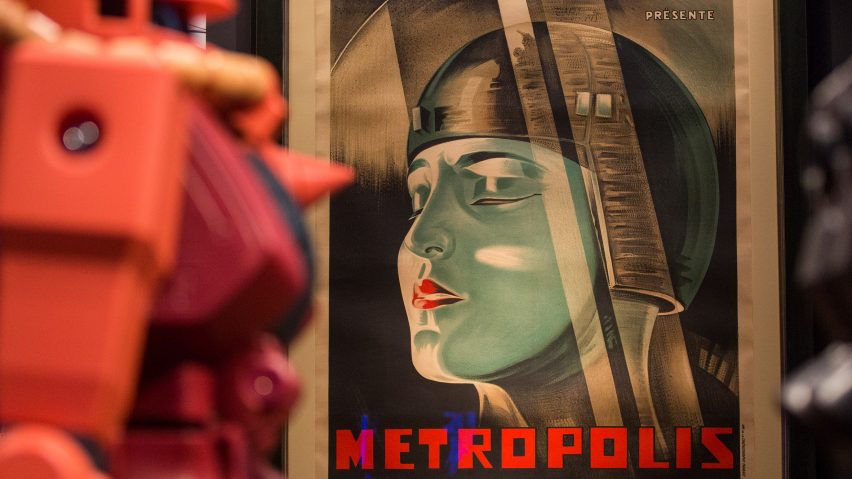
V&A Dundee curator selects five designs that map the evolution of robotics
An exhibition at the V&A Dundee explores the evolving relationship between humans and robots. From 1920s sci-fi films to brain-controlled exoskeletons, curator Kirsty Hassard picks five highlights.
Hello, Robot. Design Between Human and Machine looks at how we have perceived and interacted with robots, both in the past and present.
It also examines how they are being increasingly integrated into our personal and professional lives, and the role that designers play in shaping these interactions.
"Robots are part of our everyday and not a moment goes by without new developments in robotic technology," said Hassard.
"How and where we encounter robots, the sort of relationships we form with them, and how we interact with them – or they with us – is no longer the exclusive domain of engineers and IT experts," she continued. "Designers are now often at the centre of these decisions."
Hassard chose to map out the influence and evolution of robots in four stages. The first focuses on both the science and the fiction surrounding robots and our fascination with artificial humans, and the second explores how robots are used in the workplace.
The third section then explores robots as household helpers and digital companions, while the fourth looks at examples of blurred lines between humans and robots.
"This is an exciting time, and the right moment to be asking big questions about the role robots should and will play in all our lives," the curator added.
Hassard talks through her five top picks from the exhibition below:
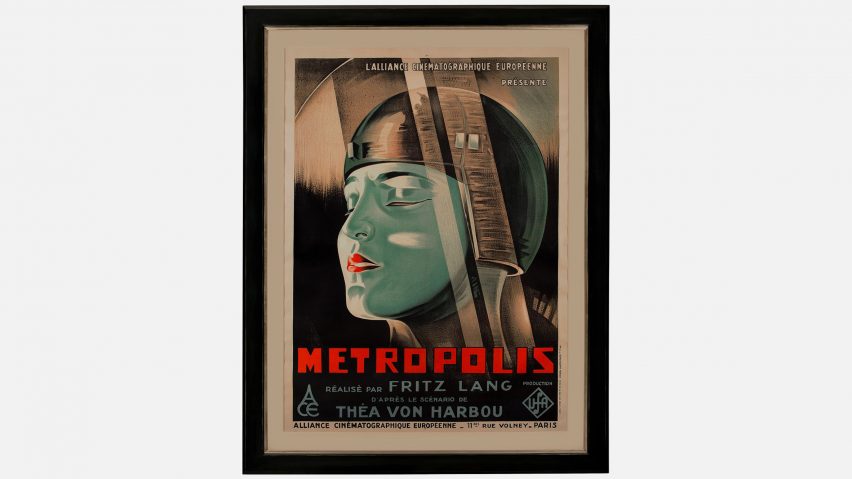
Metropolis
"Fritz Lang's German Expressionist film has been hugely influential since its premiere in 1927. Set in the dystopian future in the year 2026, the film depicts a polarised society, where the working underclass toil underground to support the elite.
"Its iconic poster, one of the most famed in cinematic history, was designed by Werner Graul. The version in the exhibition was made for a French audience and was originally displayed in the Paris Metro.
"The poster depicts Maria, the film's main character, as a robot – the Maschinenmensch. Maria is one of the first female robots in science fiction, and one of the most recognisable. She has inspired the world of science fiction and beyond, from George Lucas and Kraftwerk to Thierry Mulger and Janelle Monae.
"The polarised view of robots in science fiction either depicts them as machines that will save humankind or destroy us. Maria's robotic alter ego, the Maschinenmensch, definitely comes under the latter."
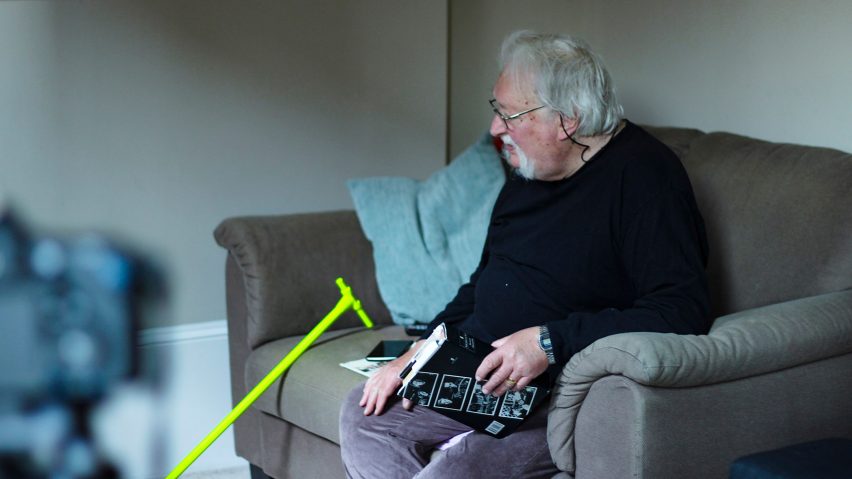
Uninvited Guests
"As well as the familiar sights of science fiction, the exhibition also has speculative installations which examine the role of smart technology in our lives. One of these is by London-based design agency Superflux.
"The short film, Uninvited Guests, shows Thomas, an elderly man, whose concerned children send him three smart devices to monitor various aspects of his lifestyle. Increasingly frustrated by these unwelcomed interventions in his life, Thomas learns to outsmart and subvert them.
"Although smart objects have an ever-increasing presence in our lives, we should be questioning their agency. As Superflux says, the installation should provoke questions about how we want to live and to grow old in an increasingly technology-mediated world."
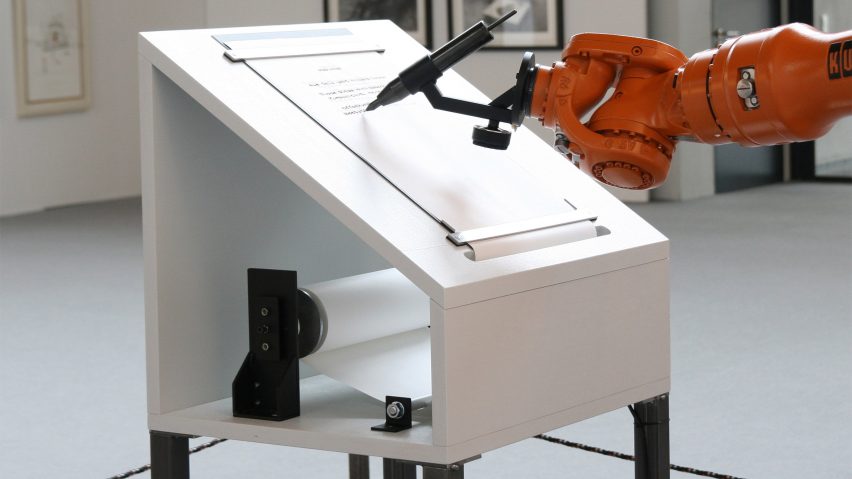
Manifest
"Whether robots can truly be creative and have imagination is a constant debate. The idea of robots working alongside us is already a reality, but working fully creatively is still a hurdle yet to be overcome. Manifest, an installation by Robotlab, goes some way to reassuring those fears.
"An industrial robot, it churns out manifestos in three languages, from a group of eight reference books within its internal memory. The reference books come from the fields of technology, philosophy and culture, but are combined at will, meaning the manifestos mostly result in a nonsensical outpouring.
"Whenever they do make sense it is completely by chance, meaning that we should be confident in our creativity not being replaced for the time being."

End of Life Care Machine
"The idea of the replacement of human touch and intimacy without humanity instigated the creation of Dan Chen's thought-provoking installation, End of Life Care Machine. It was inspired by another object in the exhibition, Paro, a robotic seal pup designed to comfort and console sufferers of dementia and Alzheimer's.
"By contrast, End of Life Care Machine is purposely robot-like in appearance, with none of the fluffy reassurance of Paro. The machine caresses your arm, and reads out a pre-recorded script, personalised with your name.
"Chen's installation raises questions about the ethics of a society which has become dependent on automation, even in the most intimate and vulnerable parts of our lives. Despite being asked to produce it commercially, his argument is that there is no substitution for human touch and compassion. In this part of our lives at least, he feels that robots should never take the place of humans."
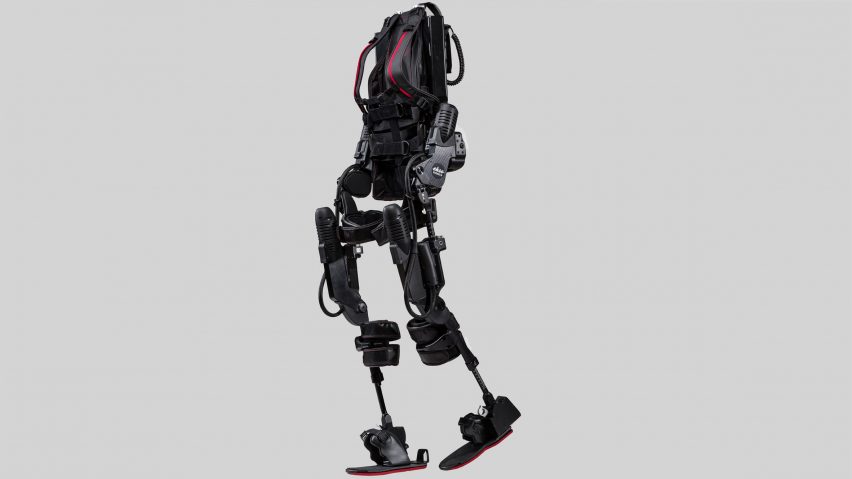
Ekso GT Robotic Exoskeleton
"The final section of the exhibition explores the convergence between human and robotics, and in medicine this is the most apparent. When this was first put into production in 2013, it was the first motor-powered robotic exoskeleton, designed to help patients whose lower body was paralysed. Steps and movement were triggered by patients shifting their weight.
"Last month, research at the University of Grenoble refined the technology further so that rather than the suit being triggered by weight, it is now moved by implants in the brain. Although still limited to use in the lab, as the suit isn't yet self-supporting, it's a pivotal step in the suit being available more widely."
Hello, Robot. Design Between Human and Machine continues until 9 February 2020.